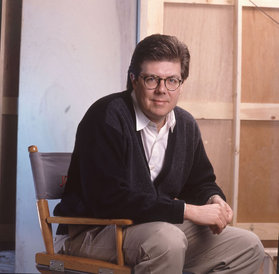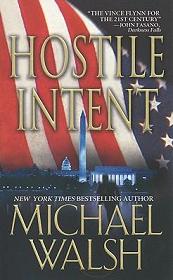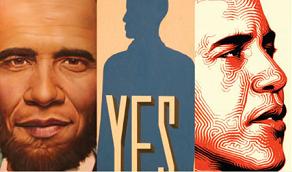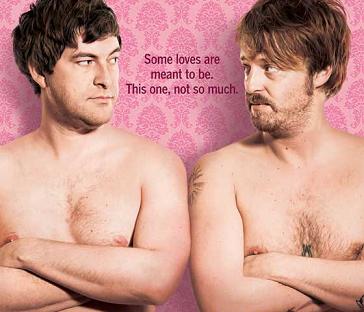I recently wrote a critique of the art community’s lack of dissent in the face of many controversial decisions made by the current administration. Entitled “The Artist Formerly Known as Dissident,” one of the key points argued in the article was the potential danger associated with the use of the art community as a tool of the state. Little did I know how quickly this concern would be elevated to an outright probability.
Sometime between when I finished the critique and when it went live online, I was invited by the National Endowment for the Arts (NEA) to take part in a conference call that invited a group of rising artist and art community luminaries “to help lay a new foundation for growth, focusing on core areas of the recovery agenda – health care, energy and environment, safety and security, education, community renewal.”
Now admittedly, I’m a skeptic of BIG government. In my view, power tends to overreach whenever given the opportunity. It’s a law of human nature that has very few exceptions. That said, it felt to me that by providing issues as a cynosure for inspiration to a handpicked arts group – a group that played a key role in the President’s election as mentioned throughout the conference call – the National Endowment for the Arts was steering the art community toward creating art on the very issues that are currently under contentious national debate; those being health care reform and cap-and-trade legislation. Could the National Endowment for the Arts be looking to the art community to create an environment amenable to the administration’s positions?
Before arguing why I see this as a gross overreach of the National Endowment for the Arts and its mission, a brief background on the conference call is needed.
On Thursday August 6th, I was invited by the National Endowment for the Arts to attend a conference call scheduled for Monday August 10th hosted by the NEA, the White House Office of Public Engagement, and United We Serve. The call would include “a group of artists, producers, promoters, organizers, influencers, marketers, taste-makers, leaders or just plain cool people to join together and work together to promote a more civically engaged America and celebrate how the arts can be used for a positive change!”
I learned after the conference call that there were approximately 75 people participating, including many well respected street-artists, filmmakers, art galleries, music venues, musicians and music producers, writers, poets, actors, independent media outlets, marketers, and various other professionals from the creative community. I suppose I was invited because of my work in creating arts initiatives, but being a former employer of the NEA’s Director of Communications was probably a factor as well.
Backed by the full weight of President Barack Obama’s call to service and the institutional weight of the NEA, the conference call was billed as an opportunity for those in the art community to inspire service in four key categories, and at the top of the list were “health care” and “energy and environment.” The service was to be attached to the President’s United We Serve campaign, a nationwide federal initiative to make service a way of life for all Americans.
It sounded, how should I phrase it…unusual, that the NEA would invite the art community to a meeting to discuss issues currently under vehement national debate. I decided to call in, and what I heard concerned me.
The people running the conference call and rallying the group to get active on these issues were Yosi Sergant, the Director of Communications for the National Endowment for the Arts; Buffy Wicks, Deputy Director of the White House Office of Public Engagement; Nell Abernathy, Director of Outreach for United We Serve; Thomas Bates, Vice President of Civic Engagement for Rock the Vote; and Michael Skolnik, Political Director for Russell Simmons.
We were encouraged to bring the same sense of enthusiasm to these “focus areas” as we had brought to Obama’s presidential campaign, and we were encouraged to create art and art initiatives that brought awareness to these issues. Throughout the conversation, we were reminded of our ability as artists and art professionals to “shape the lives” of those around us. The now famous Obama “Hope” poster, created by artist Shepard Fairey and promoted by many of those on the phone call, and will.i.am’s “Yes We Can” song and music video were presented as shining examples of our group’s clear role in the election.
Obama has a strong arts agenda, we were told, and has been very supportive of both using and supporting the arts in creative ways to talk about the issues facing the country. We were “selected for a reason,” they told us. We had played a key role in the election and now Obama was putting out the call of service to help create change. We knew “how to make a stink,” and were encouraged to do so.
Throughout the conversation my inner dialogue was firing away questions so fast that the NRA would’ve been envious. Is this truly the role of the NEA? Is building a message distribution network, for matters other than increasing access to the arts and arts education, the role of the National Endowment for the Arts? Is providing the art community issues to address, especially those that are currently being vehemently debated nationally, a legitimate role for the NEA? I found it highly unlikely that this was in their original charter, so I checked.
The NEA published a book entitled National Endowment for the Arts: A History 1965-2008 early this year. Combing through the 40+ year history of the NEA, I could not find a single instance of the agency creating or supporting a national initiative that encouraged the art community to address current issues under contentious debate.
The NEA was created by the Congress of the United States and President Lyndon B. Johnson in 1965 as “a public agency dedicated to supporting excellence in the arts, both new and established; bringing the arts to all Americans; and providing leadership in arts education.” The issue of health care is curiously absent from this description on their website.
So I’d like to start a little debate and ask you, the reader, the same question. Do you think it is the place of the NEA to encourage the art community to address issues currently under legislative consideration?
And before answering, let me give you my take.
The NEA is the nation’s largest annual funder of the arts. That is right, the largest funder of the arts in the nation – a fact that I’m sure was not lost on those that were on the call, including myself. One of the NEA’s major functions is providing grants to artists and arts organizations. The NEA has also historically shown the ability to attract “matching funds” for the art projects and foundations that they select. So we have the nation’s largest arts funder, which is a federal agency staffed by the administration, with those that they potentially fund together on a conference call discussing taking action on issues under vigorous national debate. Does there appear to be any potential for conflict here?
Discussed throughout the conference call was a hope that this group would be one that would carry on past the United We Serve campaign to support the President’s initiatives and those issues for which the group was passionate. The making of a machine appeared to be in its infancy, initiated by the NEA, to corral artists to address specific issues. This function was not the original intention for creating the National Endowment for the Arts.
A machine that the NEA helped to create could potentially be wielded by the state to push policy. Through providing guidelines to the art community on what topics to discuss and providing them a step-by-step instruction to apply their art form to these issues, the “nation’s largest annual funder of the arts” is attempting to direct imagery, songs, films, and literature that could create the illusion of a national consensus. This is what Noam Chomsky calls “manufacturing consent.”
Now, if you are for the issues being pursued by the current administration, you may be inclined to think favorably of what I am labeling “overreach.” What a powerful weapon to fight those that are opposed to our ideas, you may think. For those in this camp I ask you this – will you feel the same when the opposition has access to the same machine? If history is any indication, the pendulum swings both ways. Is persuasion what the originators envisioned when they brought the legislation that created the NEA to the floor of Congress?
As a member of the art community for the past 14 years, I raise these questions only after careful consideration. Many of those on the call are from my hometown. My position here should not be construed as a personal attack on the call participants. Many of those on the call worked tirelessly on the Obama campaign and are proud of their victory. They look at this as an opportunity to be involved directly with the White House, which is an exciting prospect to many in the art world whose experience with the government may be limited to paying taxes and voting.
But the art community must put this excitement aside and ask itself about the proper role of government agencies created to promote the arts. And if put in the wrong hands, could a message machine built by the NEA be used in a nefarious manner not currently foreseeable?
In an attempt to recapture the excitement and enthusiasm of the campaign the organizers of this conference call have entered murky waters, a strait that the NEA cannot afford to swim. Previously shackled with the controversy over the Serrano and Mapplethorpe images of 1989 that escalated to a debate over its very existence, the NEA needs to stay far away from any questions of impropriety.
There is no shortage of problems within the art community that the NEA could tackle. Museums across the country have been hit hard by the financial crisis. Their trusts and portfolios have seen massive declines. Donations, attendance, and memberships are down. Many have had to reduce exhibition hours due to staffing and budget reductions. And countless art galleries, the lifeblood and revenue stream for many artists, have closed or are on the brink of closure. Rallying the art community around these issues seems a more appropriate use of its resources.
I’m not a “right-wing nut job.” It just goes against my core beliefs to sit quietly while the art community is used by the NEA and the administration to push an agenda other than the one for which it was created. It is not within the National Endowment for the Arts’ original charter to initiate, organize, and tap into the art community to help bring awareness to health care, or energy & environmental issues for that matter; and especially not at a time when it is being vehemently debated. Artists shouldn’t be used as tools of the state to help create a climate amenable to their positions, which is what appears to be happening in this instance. If the art community wants to tackle those issues on its own then fine. But tackling them shouldn’t come as an encouragement from the NEA to those they potentially fund at this coincidental time.
And if you think that my fear regarding the arts becoming a tool of the state is still unfounded, I leave you with a few statements made by the NEA to the art community participants on the conference call. “This is just the beginning. This is the first telephone call of a brand new conversation. We are just now learning how to really bring this community together to speak with the government. What that looks like legally?…bare with us as we learn the language so that we can speak to each other safely… ”
Is the hair on your arms standing up yet?




COMMENTS
Please let us know if you're having issues with commenting.